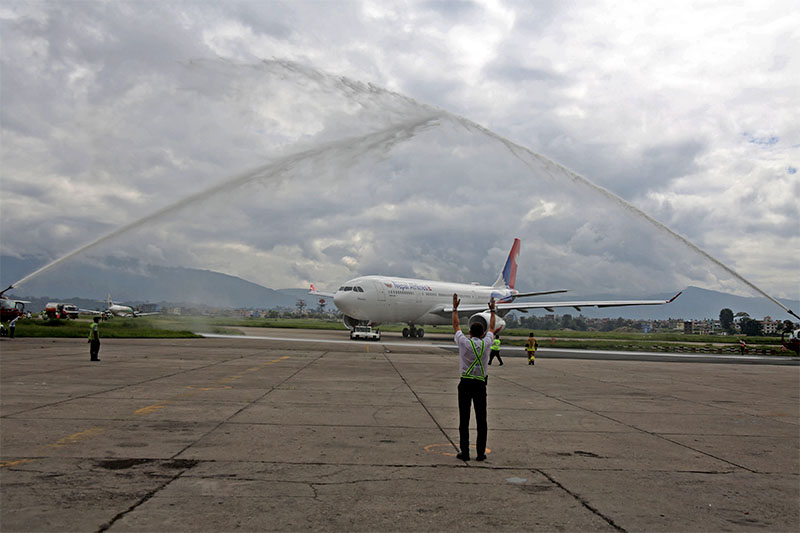Runway cracks almost a daily affair at TIA
- Officials admit no concrete initiative has been taken to rid of the recurrent problem
Kathmandu, August 3
Obstruction of flights owing to damage in the runway in the country’s sole international airport has become a frequent phenomenon in recent times.
As a result of sub-standard maintenance works and lack of seriousness from concerned officials, the runway at Tribhuvan International Airport (TIA) has started developing cracks and potholes on a daily basis. On one hand, this has been affecting the incoming and outbound flights and on the other, poses a serious threat of air accidents.
Even today, regular flights to and from TIA were halted for almost half an hour due to a crack on the runway. While around half a dozen aircraft were put on hold following the crack on the runway for around 20 minutes, a Qatar Airway’s flight had to conduct a ‘missed approach’ manoeuvre after being notified about the crack at the last moment.
In fact, TIA’s runway has developed cracks more than a dozen times in the past one month alone, raising serious questions on the quality of the runway where hundreds of flights land and take off every day carrying thousands of passengers.
“The pathetic condition of the sole runway at TIA is a serious issue as it can lead to accidents. Interestingly, TIA management seems to be reluctant on working on this issue,” an official at TIA informed seeking anonymity.
As per the official, the runway issue has to be discussed among various experts, including officials of the Department of Roads (DoR) and ‘A’ class civil engineers, to find the actual reason behind everyday cracks and propose a long-term solution to it.
“I can’t fathom why TIA management is not taking any concrete initiative to address such a grave problem,” he added. The official informed that these days cold mixed asphalt is being used for maintenance of the runway, which is less durable compared to hot mixed asphalt.
Moreover, the increasing number of flights at TIA, especially wide-body aircraft, has been compounding
the problem.
A report jointly prepared by Ayesa Ingenieria Arquitectura of Spain and Aéroports De Paris Ingénierie of France had earlier revealed that the runway at TIA is not suitable to handle wide-body aircraft due to its ageing asphalt foundation.
Murari Bhandari, chief of Civil Engineering Department at TIA, said frequent cracks on the runway are a result of its weak and outdated base, which was developed almost four decades ago, as highlighted by the aforementioned report.
According to him, the old base of the runway cannot withstand extensive pressure while the air traffic frequency and movement of large Airbus and Boeing aircraft have increased notably in the past few years.
The only probable solution to this problem, Bhandari claims, is rehabilitation of the entire runway at TIA, from the base itself. “We have been performing maintenance works on the runway every time there is a problem, but we need to understand that the root problem lies in the design of the foundation.”
Meanwhile, Raj Kumar Chhetri, general manager of TIA, said that the rehabilitation process of the runway will be initiated soon. “Runways have to be rehabilitated every 10 years, but we have not been able to do so. We will soon complete the tender process for runway rehabilitation and start rehabilitation works,” he mentioned.






